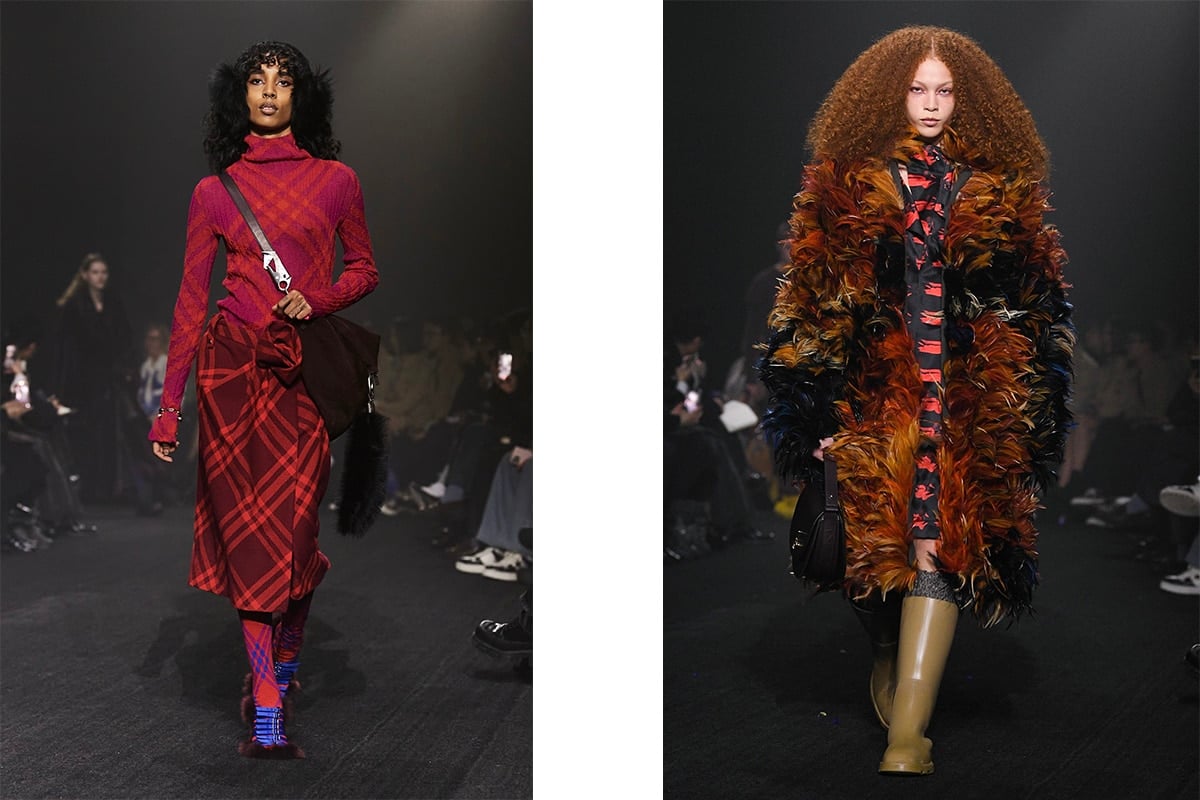
The noise around Daniel Lee and his much-anticipated debut for his inaugural Fall Winter 23 Burberry show was always a call that was coming from outside the house. The loudest he has perhaps ever shouted was with his dedication to Bottega green, and for his first go with Burberry – held in a cavernous hall with no set but some down lights and tartan blanket covered seats – it was a satisfying reminder of this fact.
Lee doesn't need to yell through viral set tactics or big ticket runway appearances, there was barely even a nepo baby in sight (just one). Instead, you could tell his singular job was creating a collection that lived up to the pressure of being fashion's golden boy.
One of the most daunting things about a House like Burberry is how direct the heritage brand's codes are. Lee digested them in a way that probably only he could at that moment. The first look, and an arguable favourite, seemed to appear out of the darkness. A model carrying a hot water bottle wearing a khaki trench with a forest green fur (faux?) collar. What followed, was a reinterpretation of Burberry's famed check. It came out in deep greens and purples, blues and whites, yellows and greys. Some felt classic and traditionally English, other times it felt as though punk was in the air. After all, most of LFW is tributing to Dame Vivienne Westwood, the original architect of punk.
His earlier hints of peak Britishness came through. The check was applied to tailoring, tights, mid length pencil skirts and oversized, felted wool coats as well as more modern silhouettes, like a slouchy trouser with zipper pockets layered under a skirt or skivvy. Graphic t-shirts were worn with tartan pants on models with shaved heads, while elsewhere, checked trench coats were styled backwards.
There were feminine elements, too. Mallard printed silky dresses with fluid neck ties and floral chiffon one-shoulder dresses with rosettes at the hip. Later, Lee introduced feathers. Not wispy ostrich feathers like Pierpaolo at Valentino – large, vibrant rooster plumage fanned out on the torso of a turtleneck and layered onto an overcoat.
Lee's notoriety around the success of his accessories offering would not have been lost on Burberry's decision to tap him with this new position, and a first glimpse emerged here. A reworked, wine coloured wellington boot with a slightly squared off toe, a fur lined heeled flip flop with dainty silver buckles. There was a fuzzy clutch that immediately felt reminiscent of his Bottega days, and crossbody leather totes in pale sage and deep forest green.
Here, Lee splices many facets of British culture in a way that feels astute, but not obvious. The grunge and the punk and the streetwear that keeps Britain's creative pulse on beat is introduced into aristocracy. Into heritage homes and long walks across the field with the dogs. But there is more, too. A lot of us were curious about how Lee was going to translate his process into a House like Burberry. The answer? Seemingly, with little sweat off the brow. Immediately, in the scrunchy, straight leg trousers, rounded toes, rich colours, and instantly attractive accessories, you know that this is Lee's handiwork. In the tartan and the trenches and hunting jackets and the wellington boots, it is also clear that this is Burberry.





























